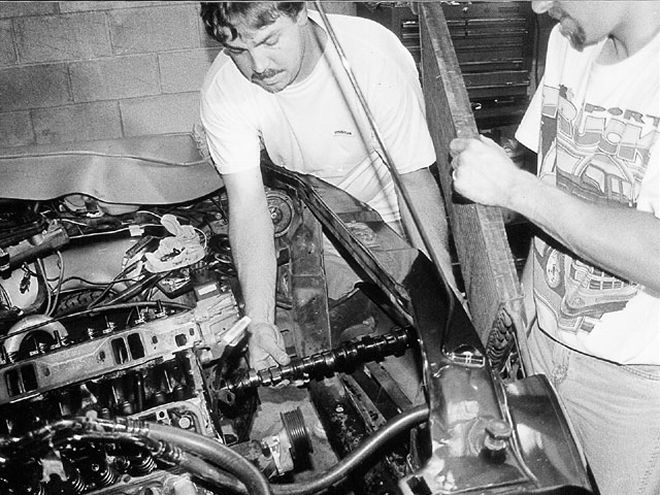

Quick! What are the first three things you typically do to your engine when you want to increase power? First on the list is usually an intake and carb swap, followed by headers and dual exhaust. Some things never change, right? Number three on the list is typically a cam change, and thanks to Crane Cams, number three has a new twist.
Roller cams are nothing new-Clay Smith was grinding them in the '50s, and they're so common today that most new cars actually come equipped with hydraulic rollers from the factory. And as your Chevy and Ford buddies have probably been bragging for years, they've made their way into the aftermarket.
For the first time, it's as easy to install a hydraulic roller cam in your LA, B/RB, and Hemi engine as it is a standard hydraulic or solid lifter cam. Maybe easier! Why it's taken a cam company this long to come out with a hydraulic roller cam for Mopars is beyond us, but fortunately Crane has stepped up and done it.
Solid roller Mopar cams have been on the market for years, but unless you're a die-hard maintenance freak, the thought of putting a solid lifter cam-either roller or flat tappet-in your engine wasn't the best of ideas. And since you have better things to do than reset valve lash every week, you stick to a maintenance-free hydraulic lifter cam.
The new generation 318 and 360 Magnum motors feature hydraulic roller cams, but Magnum roller lifters are longer, so the Magnum block's lifter bore is deeper. Also, the Magnum block has a provision to bolt down the spider plate that retains the roller lifters and keeps them from turning in their bore. So, it isn't just a matter of using, or even shortening, stock Magnum lifters. Crane had to design application-specific hydraulic roller lifters for Mopars.
Then why go with a roller cam in the first place? There are two main advantages: First, a roller lifter takes away the friction between the cam lobe and the face of the lifter. Less friction inside your engine always equals more power, not to mention longer life. Second, because there is a roller bearing riding on the surface of the cam, rather than a flat face with a square edge to dig into the cam lobe, the lobe of the cam can be given a much more aggressive profile. A faster lift allows the valve to open and close much quicker, and more importantly, be held open much longer than a conventional flat tappet cam's profile. What you get is something between full-race roller and mild hydraulic, which is good for a wider power band, cooler engine oil temp, and longer engine life. It really is all the comfort and convenience of old flat tappet hydraulic lifters (drop them in and forget about them) with the performance, power, and lower friction of a roller.
Installing one of Crane's roller lifter cams was almost easier than installing a flat-tappet. It may actually be easier. With a roller cam, you don't coat the lobes with any type of break-in lube-regular motor oil is simply poured onto the cam lobes as the cam is installed. As for the lifters themselves, they're simply dropped in their holes and the pushrods are set in place on top of them, just like a flat tappet. As for break in, there really isn't any need, and the chances of wiping out a cam lobe are gone, due to the roller bearing riding on the cam's lobe.
While a roller bumpstick is obviously more expensive than a typical hydraulic cam (more moving parts, precision machining, and all that), the benefits are worth the extra cost.
We installed a new Crane roller cam in a 340 block fitted with Magnum heads, which brings up another interesting benefit-with the better combustion chamber and port design of the Magnum heads, enthusiasts have been starting to retrofit them onto the earlier LA blocks by swapping the old-style lifters with the newer oil-through-the-pushrod type required to feed the Magnum heads valvetrain oil. Because all of Crane's lifters are the oil-through-the-pushrod types, you can convert to Magnum heads at no additional cost. But if you want to keep your original shaft-mount rocker heads, that's no problem either-just order solid pushrods and drop them in. Even though we did this installation on an engine fitted with Magnum heads, the procedure is the same, regardless of what engine you have. Follow along as we up the performance of our 340.